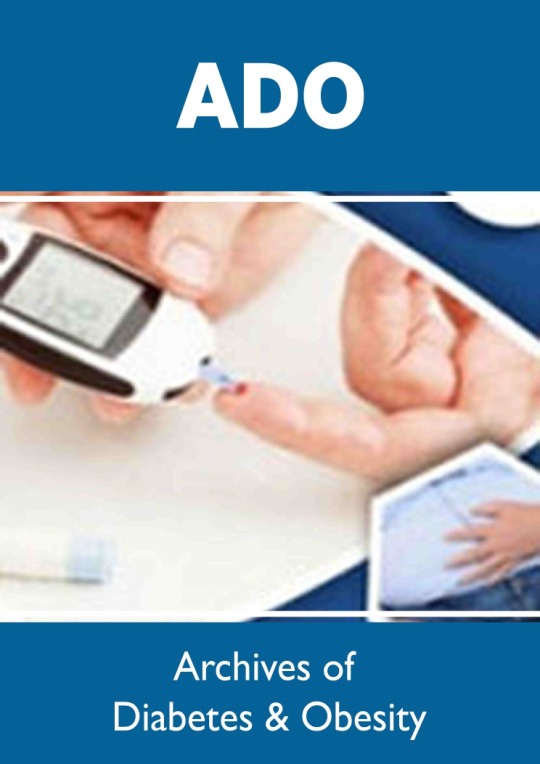#Rare's Atp Archive
Explore tagged Tumblr posts
Text







Gun Atthaphan the man that you are
Cr: snap_gun
#he's sexy and he knows it!!#good for him!!!#offgun#gun atp#gun atthaphan#april 2024#rare's atp archive#gun atp slaying looks#babii 24/7 concert
798 notes
·
View notes
Note
want to simply point out the majority of the yes are coming from white people ... 😐 ill simply let that speak for itself !! Love seeing white people agree with harmful rhetoric and ideals totally hasn't historically ruined BIPOC historically !!! Noooo the white people would NEVERRR 😁😁 !!! They know exactly what's best for the BIPOC community 🙏🙏🔥🔥 they'd never support harmful stereotypes /sarcastic ... Im slowly thinking MOGAI as a community is just as unsafe for BIPOC as any other group of queer identity atp ... Even in a group of diverse experiences and expressions BIPOC problems and struggles still be down played ,, turned into cutesy identities and honestly it's why I want to step away from this community ,, It's always "" support BIPOC "" till they voice the community is racist and ignorant ... then we change sides 😄😄 ... radqueers are not like Nazis where their shit SHOULD be public knowledge for their harm to millions ... they are an online community like 4chan they rarely show or act outside of their online persona ... ain't no justification to archive accounts (( rather small in the sceme of online )) of ignorant people who wouldn't publically come out as transnativeamerican transwheelchair user whos a pro contact MAP/necro who ... if they did they'd in all likelyhood be shunned and have people fight them IRL for thinking touching kids is ok ... but what do I a BIPOC know im knowledgeless compared to these amazing smart white people who know our struggles from the RQ community better than anyone !!! 🤗🤗
Hi, this was posted before self put foot down about overly aggressive way selfves being spoken to, but still want mention. This is extremely hostile, as well as, in first sentence, plain misrepresentation of the poll numbers.
Majority votes for yes were from white people. Majority votes in general from white people. Most commonly selected option, across all three categories, was yes. Out of total votes across both categories for PoC, 54% had voted yes, 24.1% had voted unsure/nuanced, 21.8% had voted no.
Do not get to erase the racialized identities of those who voted yes just because they voted for what you disagree with. No True Scotsman fallacy. Cannot dismiss their votes and focus only on the votes from white people, is disingenuous.
Self personally believe that 4chan should also be archived. Birthplace of many hugely influential parts of internet culture. Absolute fucking cesspool over there, but does not change that on the internet, it's not uncommon for any whatever random thing be able be traced back to 4chan.
Have already spoken on matter of pro-contact, had already done so prior to you sending this ask. Is disrespectful and disingenuous for continuing bring up at this point despite all already been said.
Never once said that white people know better for the community than people of colour do. Putting words into self's mouth and at this point believe is done so maliciously. Selfves want people criticize selfves. This is going beyond that, this is just being an asshole.
#Have been sitting on this one for hours as haven't known how to reply without insulting to be honest.#Ask#Anon#Long post#Radqueer discourse#Anon hate#This one gets that tag because it is very very hostile.
4 notes
·
View notes
Text
made it all look painless
read it on AO3 at https://ift.tt/Jqj2Hwl by living_la_vida_lesbian “When Ivan was younger, he rarely smiled around the aliens. He didn’t see much of a point in doing so- they would just ask him to sing and they would clap and laugh and jeer and he would be miserable. He knew he had to at least play along- he had been sold off to the highest bidder, of course, so they would not take kindly to their money being wasted. He thought of the bright-eyed boy behind the glass, the stickers saying ‘50% OFF’ and ‘DISCOUNT’ acting as scars marring the otherwise decent sight. Ivan remembered how the boy had clamored to get closer to him, crashing into the glass, and all he could muster was a blank stare at him. The other boy clearly didn’t understand the real world, their world, but Ivan did all too well. When he later met the boy again, he was distinctly reminded of that moment.” Or, a character study of Ivan, sparing none of the gorey details. Words: 13033, Chapters: 1/1, Language: English Fandoms: Alien Stage (Web Series) Rating: Mature Warnings: Creator Chose Not To Use Archive Warnings Categories: M/M Characters: Ivan (Alien Stage), Till (Alien Stage), Mizi (Alien Stage), Sua (Alien Stage), Luka (Alien Stage), Unsha | Ivan's Guardian (Alien Stage), Urak | Till's Guardian (Alien Stage) Relationships: Ivan/Till (Alien Stage), Ivan & Mizi (Alien Stage), Ivan & Sua (Alien Stage), Ivan & Unsha | Ivan's Guardian (Alien Stage), Mizi & Till (Alien Stage), Till & Urak | Till's Guardian (Alien Stage) Additional Tags: Ivan-centric (Alien Stage), Ivan is Bad at Feelings (Alien Stage), Ivan Needs a Hug (Alien Stage), POV Ivan (Alien Stage), Till is Bad at Feelings (Alien Stage), Till Needs a Hug (Alien Stage), Angst, Heavy Angst, Hurt/Comfort, Mild Hurt/Comfort, Implied/Referenced Child Abuse, Implied/Referenced Rape/Non-con, Torture, nowhere was the inspiration for this fic, Dead Dove: Do Not Eat, Canon Compliant, or more like canon complicit atp, Spoilers, Title from a Billie Eilish Song, Character Study, IT TOOK ME AN HOUR AND A HALF TO FORMAT THIS 💔 read it on AO3 at https://ift.tt/Jqj2Hwl
0 notes
Note
met gala theme is confusing bcs it's vague asf. "garden of time" is actually based on a book but lbr no one is reading that so people will most likely take it literally. the theme of the exhibition itself is "sleeping beauties: reawakening fashion" aka archive pieces that can't be worn anymore bcs they're too old and delicate. basically this year is celebrating the conservation of clothes (and lowkey a dig at kim k wearing and ruining marilyn monroe's dress). so we're assuming that there'll be a lot of floral or maybe clock/time themed outfits, or if they follow the exhibition theme, sad pyjamas and princess cosplay. so it could be ugly but there is definite potential for some cunt to be served.
let's be delusional and assume the pinks are going. it would be a slay if the bp member with the song called flower attended the met gala with the theme "garden of time" and dior has a lot of good looks for this but at the same time i do NOT trust jisoo's stylist. jisoo is also the only one still in korea so rn it seems she's not going. lv is ugly but lisa's stylist thinks outside the box so i'm intrigued to see what she puts lisa in. could be really good or really bad. for once, chanel has the potential to do really well. they have a lot of floral archive gowns that jennie would look amazing in but i worry her stylist will play it safe, as both jennie and her stylist seem to be afraid of gowns for some reason. with the theme in mind, i'm the most worried for rosé. ysl rarely goes all out for the met and their most recent floral clothes are umm... not great. remember that purple and yellow mini dress rosé wore once? yeah. i'm scared she's gonna just wear that. unless ysl do an archive recreation, we probably won't be getting a good outfit from hér.
exactly how i feel 😐 they all have the potential of absolutely slaying the theme but i honestly don’t feel confident about that, atp all i want is for them to look good and not too boring (looking at u ysl….). and im mildly positive for that for jenlisa because lisa’s stylist seems to know what they’re doing with lv so this could be very good, and jennie and her team manage to make anything look good and interesting so im not too worried for her, though i don’t think either of them will do something experimental and avantgarde. rosie tho……i need ysl to pull themselves together for this one ☹️ and i agree, im bummed that it seems like jisoo isn’t going cause this would have been perfect for her :( yes her stylist likes boring and safe but at least they don’t seem afraid of gowns so it could have been fun
0 notes
Text
New Years Kiss (Officer Martinez x Batman Oneshot)
read it on the AO3 at https://ift.tt/S5wyW1K
by wilted_humanity
So like I love Wixiany sm and so I totally stole the way she characterizes Martinez. And I wanted some more clubbing content of him so yeah. I was gonna name him Rodrigo but atp I only see him as Daniel lol
After his fun night out clubbing to celebrate the new years, Daniel Martinez was interrupted by his disgruntled coworker: shenanigans ensue
Words: 2577, Chapters: 1/1, Language: English
Fandoms: Batman - All Media Types, The Batman (Movie 2022)
Rating: General Audiences
Warnings: Creator Chose Not To Use Archive Warnings
Categories: M/M
Characters: Officer Martinez (The Batman Movie 2022), Bruce Wayne
Relationships: Officer Martinez & Bruce Wayne, Officer Martinez/Bruce Wayne
Additional Tags: Clubbing, Rare Pairings, Falling In Love, New Year's Eve, New Year's Kiss, First Kiss, Partying, How Do I Tag
read it on the AO3 at https://ift.tt/S5wyW1K
0 notes
Text
Potentiation of Activity of Benfotiamine Co Administered with Thyroxine in Diabetes Induced Peripheral Neuropathy in Rats
Lupine Publishers| Archives of Diabetes & Obesity

Abstract
Diabetic peripheral neuropathy (DPN) is a multi-etiological microvascular complication. Prolong hyperglycemia leads to formation of advance glycation end product (AGE) and oxidative stress which are contributors of nerve dysfunction. DPN manifests as pain, slowing of nerve conduction velocity (NCV), sensory loss etc. The aim of the present study is to evaluate the individual and combined protective effect of benfotiamine (BT) and thyroxine (T4) against Streptozotocin (STZ) induced DPN in rats. After 48 hours of a single injection of STZ (60 mg/kg bw i.p) diabetic rats were administered BT (100 mg/kg p.o.), T4 (1mg/kg.s.c,) and their combination. Diabetic rats at 5th week, exhibited significant decrease in body weight, hyperalgesia, decreased muscle coordination, grip strength and NCV. Antioxidant activity of reduced glutathione (GSH), catalase (CAT), superoxide dismutase (SOD) was also found to be significantly decreased. Significant higher levels of glycosylated hemoglobin (GHb) and Malondialdehyde (MDA) were also observed in diabetic rats. Treatment with BT, T4 and their combination attenuated the decrease in level of nociceptive threshold, muscle coordination, grip strength.
NCV and antioxidant activity. Significant decrease in the elevated levels of GHb and MDA was also observed. A histopathological study of sciatic nerve also confirmed the improvement in cell architecture as compared to diabetic rats and has strengthened the neuroprotective effect of BT and T4 combination group. An improved In Vitro AGE inhibitory activity of BT, T4 and their combination was observed. These finding suggested that BT, T4 and their combination exerts a protective effect in progression of diabetic neuropathy by decreasing GHb, AGE formation and oxidative stress.
Keywords:Micro vascular; NCV; Antioxidant; AGE; Thyroxine; Benfotiamine
Abbreviations:DM: Diabetes mellitus; DPN: Diabetic Peripheral Neuropathy; MAPK: Mitogen Activated Protein Kinase; NCV: Nerve Conduction Velocity; TH: Thyroid Hormones; BT: Benfotiamine; AGE: Advance Glycation End Product; LPO: Lipid Peroxidation; SOD: Superoxide Dismutase; CAT: Catalase; GSH: Glutathione; TBARS: Thiobarbituric Acid Reactive Substances; BSA: Bovine Serum Albumin; PKC: Protein Kinase C; ROS: Reactive Oxygen Species
Introduction
Diabetes mellitus (DM) is a worldwide major health problem and it is a chronic metabolic disorder characterized by hyperglycemia resulting from inadequate secretion or impaired action of endogenous insulin. The prevalence of diabetes is increasing worldwide and is believed to increase to 300 million by the year 2030 [1]. Uncontrolled or persistent hyperglycemia in DM leading to several microvascular and microvascular complications. Diabetic peripheral neuropathy (DPN) is a common microvascular complication of DM affecting more than 50% of the diabetic patients [2]. The pathogenesis of DPN is considered to be complex and multifactorial resulting from contributions of various pathways including metabolic and vascular factors, which consists of activation of polyol pathway, advanced glycation end products pathway, hexosamine pathway, increased activity of mitogen-activated protein kinase (MAPK), protein kinase C, poly (ADP-ribose) polymerase, oxidative stress, apoptosis, impaired neurotrophic support, autoimmunity, inflammation, up regulation of endothelin [3]. The impairment of nerve function is a well-established early manifestation of diabetes both clinically and in experimental animal models. DPN causes dysfunction of small and large nerve fibers and negatively impacts quality of life in diabetic patients. Small-fiber peripheral neuropathy is characterized by behavioral abnormalities (cold, thermal hyperalgesia, loss of grip strength and motor incoordination and burning or lancinating pain, and predisposition to foot ulceration). Large-fiber dysfunctions include loss of position and vibration sensation, nerve-conduction abnormalities, and distal muscle weakness. Early disorders of nerve function include slowing in nerve conduction velocity (NCV), followed by axonal degeneration, axoglial disjunction, paranodal and loss of fibre density. Microangiopathy [4]. A number of different agents from diverse chemical classes have entered clinical trials for the treatment of metabolic abnormalities in DPN, but only few approved for clinical use while other drugs either ineffective or withdrawn [2]. Current treatment options for symptomatic treatment of DPN include antidepressants, anticonvulsants. These agents are modestly effective for symptomatic relief, but they neither affect the underlying pathology nor do they slow progression of the disease [5]. Hence a novel approach to bridge the gap in selecting the compound in treatment of DPN was used .The discovery of use of a drug for a new indication is an arbitrary process, as shown by many past examples like the use of zinc acetate for the treatment of Wilson’s disease [6], arsenic for acute promyelocytic leukemia [7], amphotericin B for leishmaniasis [8], and thalidomide for multiple myeloma [9]. The discovery of these “alternative” uses for drugs different from originally intended drug development process is referred to as drug repurposing or repositioning. Repositioning of drug efforts has many advantages, because the pharmacokinetics and pharmacodynamics of the drug are known, repositioning discoveries are less costly and quicker than traditional discovery efforts [10], which usually take 10-15 years [11], and cost upward of $1 billion [12], Although physicians and pharmaceutical/ biotechnology companies have manual methods and prior knowledge that enable them to carry out drug repositioning clinical trials, such successful repositioning of drugs is often serendipitous and rare. In this study we have selected thyroxine to explore for its activity in DPN. Thyroid hormones (TH) [T4 (tetraiodothyronine) and T3 (triiodothyronine)], the only iodine-containing compounds with biological activity [13]. TH stimulate synthesis of Na+/K+ ATPase and also regulates metabolism by stimulating protein synthesis and increase the use of glucose and fatty acids for ATP production. They also increase lipolysis and enhance cholesterol excretion [14]. The cardiac side effect of D isomer of thyroxine resulted discontinuation of the clinical uses of this hormone. Under normal conditions, about 41%of thyroxine is converted to T3, and about 21% is converted to metabolically inactive 3,3,5-triiodothyronine (reverseT3, rT3). T3 is a powerful inducer of pancreatic acinar cell proliferation in rodents [15]. In Vitro studies of human and rodent insulinoma cell lines showed that T3 protected from apoptosis and induces β-cell growth and proliferation [16]. A serendipitous, positive association between serum-FT3 (free tri iodothyronine) and an estimate of insulin production was found in euthyroid, lean, healthy individuals [17].Treatment of Human pancreatic duct cells (hPANC-1)with T3 induced changes in cell morphology, promotes cell differentiation into insulin-producing β-cells, unregulated insulin and glucose transporter protein-2 transcripts, and increases insulin release into the medium. TH receptor has been identified in pancreatic β -cell lines [18,19], T3-enhanced insulin release in isolated rat pancreatic islets exposed to glucose concentrations of 2-8 mmol/l, had no effect at concentrations of 12 mmol/l, and inhibited insulin release at concentrations of 16.6 mmol/l [20]. T3 promoted expression of important proteins involved in both glucose and lipid metabolism that may influence insulin secretion [21]. Benfotiamine (BT), a lipid soluble vitaminB1 with much higher bioavailability than thiamine [5] Benfotiamine was shown to prevent experimental diabetic retinopathy and In Vitro hyperglycemia-induced endothelial dysfunction. The effects of benfotiamine on in vivo endothelial function remained unknown [22]. Therefore, the present study was designed to evaluate whether diabetes induced DPN can be reversed by treatment with thyroxine and BT.
Materials and Methods
Experimental Animals
In-house laboratory bred healthy Wistar rats of weighing 200-250g were included for the study. Animals were housed in polypropylene cages on clean paddy husk bedding. Animals were maintained under controlled temperature at 25°C± 2°C with 12hr light/dark cycle with food and water provided ad labium. Animals which do not comply with above criteria, and which are found to be diseased will be excluded from the study. Before conducting the experiment, ethical clearance was obtained from “Institutional animal ethics committee” Al-Ameen College of Pharmacy”, Bangalore. Approval No: AACP/P-48.
Drugs and Reagents
Thyroxine (gift sample from Apotex Pharmachem India Pvt. Ltd.), benfotiamine (gift sample from Strides Arco Lab Pvt.Ltd.) were used in the present investigation. Streptozotocin (STZ) was purchased from Sigma Aldrich. Commercial diagnostic kit for the estimation of serum glucose was obtained from Span Diagnostics Ltd. Glycosylated hemoglobin kit was obtained from Crest Biosystems Pvt. Ltd. Other chemicals and reagents were of analytical grade and purchased from local suppliers.
Design of the Experiment
Induction of Diabetic Peripheral Neuropathy: After an overnight fast, Wistar rats were administered a single injection of streptozotocin [60 mg/kg of body weight i.p.in 100 mM sodium citrate buffers, pH 4.5] [23]. After 48 hours, animals with fasting blood glucose levels higher than 250mg/dl were selected for the study.
Experimental Procedure
Rats were randomly assigned in six groups (n=6)
Group1: Normal Control
Group2: Diabetic Control
Group3: Diabetic Control+ T4 (1mg/kg.s.c) [24] thrice a week for 5 weeks
Group4: Diabetic Control+ BT (100 mg/kg p.o.) [25] daily for 5 weeks
Group5: Diabetic Control +BT (100 mg/kg p.o.)+T4 (1mg/ kg.s.c,) for 5 weeks
For preventive studies treatment was started from day 2 of STZ administration along with insulin (3IU/kg, s.c) [26]. 5 weeks post treatment various behavioral, biochemical, electrophysiological and histopathological parameters were studied.
Behavioral Studies
Thermal and Cold Hyperalgesia [27,28]: Thermal and cold hyperalgesia were measured using the tail-immersion test in water maintained at high (46ºC) or low (4ºC) temperature. The duration of tail immersion was recorded, and a cut-off time of 15 s was used.
Measurement of Muscle Incoordination Using Rota Rod [28,29]: Rota rod has been used to evaluate motor coordination by testing the ability of rats to remain on a revolving rod. The apparatus has a horizontal rough metal rod of 3 cm diameter attached to a motor with variable speed. This 70 cm long rod was divided into four sections by wooden partitions. The rod was placed at a height of 50 cm to discourage the animals to jump from the rotating rod. The rate of rotation was adjusted in such a manner that it allowed the normal rats to stay on it for 5 min. Each rat was given five trials before the actual reading was taken. The readings were taken at15, 25, rpm after treatment in all groups of rats.
Measurement of grip strength [29,30]: Grip strength meter was used for evaluating grip strength of animals. Before commencement of experiment, the animals were acclimatized by placing on the instrument for some time to train, and then rats were held by the tail above the grid of grip strength meter. The animal was moved until its front legs were grasped the grid and it was brought to an almost horizontal position. The base of the tail was then pulled following the axle of the sensor until it released the grid. The force achieved by the animal was then displayed on the screen and was recorded as new tons or kg units.
Biochemical Studies
Estimation of GHb [30,31]: At the end of study (5 weeks) blood was withdrawn through retroorbital plexus of overnight fasted rat under light ether anesthesia using a glass capillary and collected in EDTA tubes. The glycosylated hemoglobin was determined by using kit. A hemolysed preparation of whole blood is mixed continuously for 5 minutes with a weakly binding cation-exchange resin. The labile fraction is eliminated during the hemolysate preparation and during the binding. During this mixing, HbAo binds to the ion exchange resin leaving GHb free in the supernatant. After the mixing period, a filter separator is used to remove the resin from the supernatant. The percent GHb is determined by measuring absorbance of the GHb fraction & the total hemoglobin (THb) fraction. The ratio of the absorbance of the GHb & the THb fraction of the Control and the Test is used to calculate the percent GHb of the sample using below formula.
Preparation of Nerve Homogenate: A segment of sciatic nerve, approximately 1.5 cm in length, 5mm proximal and 5 mm distal was used for preparing the 10% w/v homogenates for biochemical estimation. Tissue homogenates were prepared in 0.1M phosphate buffer (pH 7.4). The homogenate was centrifuged at 1000 rpm 4ºC for 3 min and the supernatant divided into two portions, one of which was used for measurement of lipid peroxidation (LPO) and the remaining supernatant was again centrifuged at 12,000 rpm at 4ºC for 15 min and used for the measurement of lipid peroxidation (LPO), superoxide dismutase (SOD), catalase (CAT) and glutathione (GSH).
Measurement of Lipid Peroxidation: The extent of lipid peroxidation in terms of thiobarbituric acid reactive substances (TBARS) formation was measured according to the method of Esterbauer and Cheeseman. Tissue extracts were mixed separately with 1ml TCA (20%), 2ml TBA (0.67%) and heated for 1h at 100°C, after cooling, the precipitate was removed by centrifugation. The absorbance of each sample was measured at 535 nm using a blank containing all the reagents except the sample. As 99% TBARS are malondialdehyde (MDA), so TBARS concentrations of the samples were calculated using the extinction coefficient of MDA, which is1.56 x 105 M-1 cm-1 and were expressed as μM of malondialdehyde per mg protein [31-34].
Estimation of Superoxide Dismutase (SOD) and Catalase Activity: Sciatic nerve homogenate was centrifuged at 4°C, 17,500×g for 10min. Supernatant was used for the measurement of SOD activity by pyrogallol autooxidation method [35,32] and catalase activity by H2O2 degradation method, which is a quantitative spectroscopic method developed for following the breakdown of H2O2 at 240nm in unit time. The sample readings were taken by placing 1ml of phosphate buffer and 100 μl of tissue homogenate in the reference cuvette and 1 ml of H2O2 and 100 μl of homogenate in the test cuvette in the spectrophotometer. For each measurement, the reading was taken at 240nm 1min after placing the cuvettes in Shimadzu spectrophotometer [36,33].
Measurement of Reduced Glutathione Activity: Reduced glutathione was assayed by the method of Van Dooran [37,34]. Briefly1.0 ml of sciatic nerve homogenate (10%w/v) was precipitated with 1.0 ml of sulphosalicylic acid (4%). The samples were kept at 4°C for at least 1h and then subjected to centrifugation at 1200g for 15min at 4°C.The assay mixture contained 0.1 ml supernatant,2.7 ml phosphate buffer (0.1M, pH 7.4) and 0.2 ml 5,5, dithiopyrs (2-nitro benzoic acid) (Ellman’s reagent, 0.1 mM, pH 8.0) in a total volume of 3.0 ml. The yellow color developed was read immediately at 412nm and the reduced GSH levels were expressed as μg/mg protein.
Electrophysiological Studies
Isolation of Sciatic Nerve: The rats were sacrificed by administration of overdose of ketamine/xylazine i.p. After anesthesia, rat backs were shaved and NCV was recorded. Briefly incision was made at L4-L6 spinal segments. The sciatic nerves were surgically exposed from sciatic notch to the gastrocnemius tendon and the left and right sciatic nerves were rapidly removed, carefully impregnated on fine filter paper to remove any accompanying blood soaked for 10 minutes in Ringer-Locke buffer to prevent spontaneous firing of the nerve.
Measurement of Nerve Conduction Velocity (NCV): The rats were anesthetized by administration of thiopentone sodium, 30mg/kg, and i.p [1]. After anesthesia, rat backs were shaved and motor NCV was recorded. Briefly incision was made at L4-L6 spinal segments. The sciatic nerves were surgically exposed from sciatic notch to the gastrocnemius tendon and the left and right sciatic nerves were rapidly removed, carefully impregnated on fine filter paper to remove any accompanying blood soaked for 10 minutes in Ringer-Locke buffer to prevent spontaneous firing of the nerve [32].The left sciatic nerves were then placed in a moist nerve chamber (MLT016/B AD Instruments, Australia) to measure NCV. NCV was measured by stimulating proximally at the sciatic notch by stimulating electrode (MLA270 AD Instruments, Australia) with 10 mV at 1Hz to 5 Hz and the action potential was measured using recording electrodes (MLA 285) by placing distally to the sciatic knottins was calculated by distance between stimulating and recording electrodes divided by the latency. Right sciatic nerves were transferred into Glutaraldehyde solution for histopathological studies and rinsed with ice cold saline homogenized in chilled phosphate buffer (pH 7.4) and used to assay lipid peroxidation, reduced glutathione and catalase [33,35].
Histopathological Studies
The right sciatic nerves were isolated and transferred in to 0.05mol/L phosphate buffered (30g/L) glutaraldehyde solution for histopathological studies (H&E staining, Kulchitsky Pal staining and Massion’s trichome) [36,37].
To determine In Vitro glycation of protein bovine serum albumin (BSA)-glucose assay was performed based on the procedure of Brownlee et al. BSA (l0mg/mL) was incubated with glucose (500mM) in phosphate buffered-saline (pH 7.4) and extract containing sodium azide (0.02%) at 37ºC with a final concentrations of BSA (2mg/mL), glucose (40mM), sample (0.1 to 0.5mg/mL). Sterilization of reagents and samples were done by filtration through 0.2μm membrane filters. Aminoguanidine was used as an inhibitor positive control and a reactions without any inhibitor were also setup. All the samples and positive control were kept for incubation at 37ºC for 15 days. After 15 days of incubation, fluorescence intensity (excitation wavelength of 370nm and emission wave-length of 440nm) was measured for the test solutions. Percent inhibition was calculated as follows: Inhibition %= Inhibition % = (1− ( As − Ab) ( Ac − Ab) ×100
Where As = fluorescence of the incubated mixture with sample, Ac, Ab = are the fluorescence of the incubated mixture without sample as a positive control and the fluorescence of incubated mixture without sample as a blank control.
Statistical Analysis
Statistical evaluations were done by ANOVA, expressed as mean± S.E.M. followed by Bonferroni comparison test using Graph Pad In Stat (Ver.3.10) and Graph Pad Prism 5 computer programme.
Results
Assessment of General Toxicity
The percentage body weight of normal and diabetic rats treated with T4, BT and combination at 5th week was found to be 26.87±1.74g, -15.90 ± 0.769g,-6.433±0.493g.-6.635 ± 0.661,-5.150± 0.4366.The percentage of change of body weight of diabetic rats significantly less (<P0.001) as compared to normal control, similarly the percentage of change of body weight of diabetic treated rats was significantly less (<P0.001) as compared to diabetic control rats control (Figure 1).
Behavioral Studies
Thermal and Cold Hyperalgesia
The tail flick latencies in both hot and cold immersion test of diabetic rats significantly changed at 5th week in diabetic rats as compared to normal rats (P<0.001) . 5 weeks treatment with T4, BT and combination significantly improved P<0.001 cold and hot immersion performance. (Figures 2&3).
Measurement of Muscle Incoordination using Rota Rod
Time latencies at both 15, 25 rpm of normal rats was found to be 103.8±1.74,67.67±1.687 respectively, time latencies of diabetic rats at both 15,25 rpm was found to 75.5±1.176 38.83±0.307 and same were significantly reduced (P<0.001) as compared to normal control. Time latencies of diabetic rats treated with T4, BT and Combination at both 15, 25rpm was found to be 86.67±0.7149, 44.83±0.477, 86.83±0.792, 52.17±0.872, 91.5±0.846, 57.17±0.792 respectively and same were significantly P<0.001 improved (Figures 4&5).
Measurement of Grip Strength
The grip strength of normal rats was found to be 9.822±0.1332,27.97±0.1171 respectively, The grip strength of diabetic rats was found to be 75.5±1.176, 38.83±0.307 and same were significantly reduced (P<0.001) as compared to normal control. Time latencies of diabetic rats treated with T4, BT and combination at both 15,25 rpm was found to be 86.67±0.7149, 44.83±0.477,86.83±0.792,52.17±0.872,91.5±0.846,57.17±0.792 respectively and same were significantly P<0.001 improved (Figure 6).
Biochemical Studies
Estimation of GHb: The percentage of GHb of normal rats was found to be 4.577±0.0249, The percentage of GHb of diabetic rats was found to be 9.537±0.066, and same was significantly reduced ( P<0.001) as compared to normal control. The percentage of GHb of diabetic rats treated with T4, BT and combination was found to be 9.357±0.01838, 5.698±0.02561, 5.277±0.0261, respectively and same were significantly improved. P<0.05 when compared T4 treated diabetic rats with diabetic control. P<0.001 when compared BT, combination treated diabetic rats with diabetic control (Figure 7).
Measurement of Lipid Peroxidation: The sciatic nerve MDA levels of normal rats was found to 1.627±0.008433, The sciatic nerve of MDA levels diabetic rats was found to be significantly high (P<0.001) i.e 3.553±0.02860, The sciatic nerve MDA levels of diabetic rats treated with T4, BT and combination was found to be 3.235±0.008466, 3.368±0.009098, 4.080±0.01807, respectively and same were significantly (P<0.001) reduced (Figure 8).
Estimation of Superoxide Dismutase (SOD): Sciatic nerve SOD activity in normal rats was found to be 205.7±0.1078, Sciatic nerve SOD activity was significantly (P.001) low 106.8±0.2798 in 5 weeks diabetic rats. SOD activity of diabetic rats treated with T4, BT and combination were found to be 130.0±0.2540, 135.6±0.1474 and 128.5±3.212 treatment significantly (P<0.001) restored SOD activity when compared to diabetic control (Figure 9).
Estimation of Catalase: Sciatic nerve catalase activity in normal rats was found to be 0.1058± 0.0004, Sciatic nerve catalase activity was significantly (P.001) low 0.0545±0.0013 in 5 weeks diabetic rats. Catalase activity of diabetic rats treated with T4, BT and combination were found to be 0.08833±0.00230, 0.0950±0.00096and 128.5±0.00047 treatment significantly (P<0.001) restored catalase activity when compared to diabetic control (Figure 10).
Measurement of Reduced Glutathione Activity: Sciatic nerve glutathione content in normal rats was found to be 0.1058± 0.0004, Sciatic nerve catalase activity was significantly (P.001) low 0.0545±0.0013 in 5 weeks diabetic rats. Catalase activity of diabetic rats treated with T4, BT and combination were found to be 0.08833±0.00230, 0.0950±0.00096and 128.5±0.00047 treatment significantly (P<0.001) restored catalase activity when compared to diabetic control. (Figure 11).
Measurement of Nerve Conduction Velocity (NCV)
Sciatic nerve conduction velocity was significantly (<P0.001) was significantly reduced in 5 weeks diabetic rats 44.11± 0.2907 when compared to normal 53.13±0.4599, T4 treated diabetic rats significantly (P<0.01) exhibited improved NCV 45.72±0.1954. BT and combination both have also significantly improved (P<0.001) NCV 48.01±0.1954, 48.64±0.1876 (Figure 12).
In Vitro
Glycation of Proteins
AGEs formation after incubation at 37ºC for 15 days, with an IC50 value of BT, T4, combination and standard aminoguanidine was found out to be 166.6±0.45μg/ml,410.25±0.32μg/ml, 162.7±0.37 μg/ml, 322.4± 2.23 μg/ml respectively. The combination exhibited higher inhibitory activity i.e.162.7±0.37μg/ml against AGEs formation after incubation compare to aminoguanidine (Figure 13).
Discussion
The major findings of the present study were that STZ induced diabetic rats showed significant weight loss, muscle incoordination, thermal and cold hyperalgesia, decreased grip strength, increased % GHb, electrophysiological abnormalities like decreased NCV and histological abnormalities when compared to normal rats. Treatment of diabetic rats with T4, BT and combination significantly improved the diabetes induced above deficits. Our results indicated that rats with diabetes induced by STZ showed body weight reduction during the experimental period. T4, BT and combination improved body weight from the initial value. Rats treated with combination exhibited less percentage of loss of body weight compared to T4 and BT alone thus the combination improved general health of rats by improving the body weight. DPN is associated with neuropathic pain which is most common in DPN, thus we evaluated the nociception in diabetic rats. Nociception was evaluated by thermal, cold hyperalgesia and was well evident in diabetic rats, which is in accordance with several other reports [39,37]. In the present study a significant reduction in nociception with T4, BT and combination treatment for five weeks was observed. The combination of T4, and BT exhibited synergistic effect on reducing nociception. The effectiveness of T4, BT and combination in neuropathic pain is further assessed by measurement of grip strength and muscle incoordination by grip strength meter and rotarod apparatus. Rotarod test was performed to examine the motor incoordination [40,38]. The Rotarod experiment demonstrated the impairment of the motor function and coordination in the diabetic rats. Diabetic rats showed shorter fall off time from the rotating rod when compared to control, suggesting impairment in their ability to integrate sensory inputs with appropriate motor commands to balance their posture. The T4, BT and combination treated diabetic rats increased the fall off time from the rotating rod compared to STZ-induced diabetic rats. Our results showed that T4, BT and combination normalize the motor function and coordination thus helps to maintain their posture during movement on the rod. The severity of diabetic neuropathy has been associated with decreased muscle strength in both type 1 and type 2 diabetes [41,39]. In our study we observed significant improvement in motor behavior particularly grip strength in addition to motor incordination after treatment with T4, BT and combination. The combination of T4, and BT thus exhibited synergistic effect on muscle incordination and gripstrength Marked increase inpercentage of Glycosylated haemoglobin (GHb) has been reported in previous studies in diabetic rats [42,40].
The levels of GHb is the marker of state of diabetes over a period of 90 days. Similar observations were found in diabetic control rats. In our study T4, BT and combination treated diabetic rats showed decreased HbA1levles. The decrease levels of HbA1 in T4 treated ratscould be due to decreasing elevated glucose by promoting cell differentiation into insulin-producing β-cells, upregulation of insulin, glucose transporter protein-2 transcripts, and insulin release [19], thus less glucose available for glycation with hemoglobin. The inhibition activity of T4 on glycation of proteins In Vitro was also measured in our study. T4 inhibited AGE formation In Vitro could be the contributing factor in inhibition of GHb in diabetic rats. Similar trend was observed in BT and combination treated rats. BT is a transketolase (TK) activator [43,41]. BT was shown to prevent experimental diabetic retinopathy and In Vitro hyperglycemia-induced endothelial dysfunction. The effects of benfotiamine on in vivo endothelial function remained unknown. BT has shown to inhibit hexosamine pathway, advanced glycation end product (AGE) formation pathway and the diacylglycerol (DAG) protein kinase C (PKC) pathways. BT was significantly decreased levels of HbA1 as discussed earlier could be due to inhibition of AGE formation as it was evidence by inhibition of In Vitro AGE formation in our study. The protective role of BT also probably due to its activity as co enzyme in various biological pathways [44,42]. The combination of BT and T4 has also shown synergistic effect in decreasing GHb.
A number of reports indicate that DPN is a hypoxic neuropathy. Decreased nerve blood flow may lead to decreased nerve conduction velocity (NCV) due to lower Na+-K+-exchanging ATPase activity [4]. Reactive oxygen species (ROS) such as superoxides and hydroxyl radicals cause vascular endothelial damage and reduced nitric oxide mediated vasodilatation. Studies have also showed evidence that superoxides and proximitized impairs endothelium dependent vascular relaxation of epineural arterioles of the sciatic nerve in diabetic rats [45,43]. In addition to vascular mechanisms nonvascular mechanisms like impairment of neurotrophic support have also been reported to cause nerve conduction deficits in DPN [46,44]. Enhancement of neurotrophic factors by prosaposinderived peptide was reported to preserve nerve conduction [47,45].The deficit in nerve conduction velocity was completely prevented by T4 treatment could be due to increased Na+-K+- exchanging ATPase activity, providing neurotrophic support and improving micro vascular circulation [48,46] further, T4 improved the endogenous antioxidants and decreased LPO in sciatic nerve homogenate. BT, combination treated rats were also exhibited augmented NCV could be due to the ability of BT to inhibit AGE formation, improved endogenous sciatic nerve antioxidant thus inhibiting AGE, free radicals induced nerve damage in our study. Thus these two vascular and nonvascular effects of BT and T4 would be the contributing factors for the synergistic activity in combination treated rats Morphological study of siatic nerve of normal rats showed closely packed nerve fibers normal endoneuria matrix separating the nerve fibers (Figure 14A), admixture of large and small diameter myelinated fibers and the thickness of the myelin sheath is proportionate the width of the axonal diameter (Figure 14 B). Conversly, diabetic rats displayed the histological damages like reduced nerve fiber density in the endoneurium, (loss of more of small myelinated fibers while large diameter fibers are better preserved), (endoneurial (Figure 15A), vascular thickening (diabetic microangiopathy) (Figure 15 B), However, myelin sheath was unaffected (Figure 14 B) by streptozotocin in DPN [49,47]. The altered sodium cell gradient due to impairment of Na+/K+ ATPase activity leading to altered membrane environment which in turn causes histological damages, and decrease myelin protein expression.
T4, BT and combination treated rats sections showed absence of diabetic vascular changes, no vascular thickening to mild vascular thickening (Figure 15B), normal density of fibers with preservation of small and large diameter fibers, presence of regenerating nerve clusters (Figures 16-18 ).Treatment with T4, BT and combination for five weeks almost completely prevented the histological damages induced by diabetes. T4, BT could probably prevent the histological damages induced by diabetes due to prevention of hyperglycemia induced vascular and non-vascular mechanisms.
Conclusion
Treatment with T4, BT, and combination effectively prevented many of the behavioural, electrophysiological and histological manifestations of diabetes induced peripheral neuropathy by decreasing thermal and cold hyperalgesia, improving motor incoordination, grip strength, NCV, fiber density.
Highlights of the Study
a) Diabetic control rats displayed behavioral, biochemical electrophysiological and histological deficits; however, myelin sheath was unaffected.
b) T4, BT and combination of both exhibited beneficial effects in diabetes induced peripheral neuropathy in rats.
c) T4, BT and combination also inhibited In Vitro AGE formation, however IC 50 values of thyroxine was found to be high compared to BT, standard.
d) T4 was found less effective compare to BT in reducing GHb in diabetic rats.
For more Lupine Publishers Open Access Journals Please visit our website: http://lupinepublishers.us/
For more Open Access Journal on diabetes and Obesity articles Please Click Here: https://lupinepublishers.com/diabetes-obesity-journal/
To Know More About Open Access Publishers Please Click on Lupine Publishers
Follow on Linkedin : https://www.linkedin.com/company/lupinepublishers Follow on Twitter : https://twitter.com/lupine_online
#diabetes journal#Diabetes#Journal of Diabetes and Obesity#Lupinepublishers#Lupine publishers#Diabetes and Obesity Journals#obesity
0 notes
Text
Best of 2019 Vaporwave Release 2/4: Hypnagogia by Dan Mason

When I go to vaporwave and future funk shows throughout Asia, I run into many truly serious vinyl collectors and hardcore audiophiles who I respect immensely. They have been, in many respects, my introduction to and informal educators in the hi-fi world. This is not to throw shade at my Western vapor-vinyl friends, but I’ve always felt that there is a natural predisposition — perhaps imbued by traditions of archival curation and letters spanning five millennia — for Asian collectors to have the most discerning taste, and when it comes to audiophilia, the most exacting specifications.
I don’t know any fellas or fems in Hong Kong, Yokohoma, or Seoul with a substantial vinyl collection who rock a set of expensive, vintage B&Os handed down by their father, but are spinning the records on a Crossley suitcase turntable or an ATP-LX60. There’s a sincere reverence for the physical media there would naturally disincline a hobbyist from actively damaging their own material — a form of wax homicide that is all too common with my pals in Brooklyn. I’m able to put in context, however, whenever one of my countrymen mentions the cost of seeing a doctor, of course. Just staying alive is an expensive enough proposition — which explains why hi-fi enjoyment tends to skew boomer in America. Everyone else has a sword of Damocles hanging above their head.
That all said, when a particular artist is held in reverence by those Asia-oriented pals of mine, I take note and listen. Recently, when I stopped off in my usual haunts in Kanagawa early on this year, there was a name that was on all of their lips: Dan Mason. More specifically, his recent work, Hypnagogia. Admittedly, it was a release that had evaded me at first, corresponding with the peak of the IELTS testing season. And unfortunately, while I was jet-setting from university advisement here to consultancy there, the vinyl drop completely fell out of my grasp.
I spent a few weeks on discogs, but to no avail. Not even the scalpers were selling them anymore. It was this that first clued me into the idea that I might have been absent for something legendary. So shortly before I left Japan, I was able to meet a friend of a friend who was in possession of the record. It required a train ride all the way out to Osaka (in context: it’s not all that bad, Honshu’s roughly the size of Cali) to get a listen to this record.
That day, I was treated to one of the warmest, most enjoyable listening experiences of my life. The woman who welcomed us into her traditionally designed home was truly an audiophile extradonarii. As we crossed a sliding doorway into her listening room, I was met with a pair of beautiful Yamaha NS-6HX speakers in rosewood cases flanking a tower of clean, shining, silver-faced Technics separates —the SE-C01, SU-C01, and the S91 power supply. Perfectly understated, mini — but also powerful — especially for a cozy place like hers. Added for good measure was the M02 tape deck and above those was a classic 1200 turntable. It was a family of DJs, I later learned— and her nine year old daughter had recently taking up spinning on their set upstairs!
As the album begun, I closed my eyes and let the almost overwhelming brightness from the technics/yamaha combo wash over me. And after a few seconds, I got past the uniqueness of the set and had my Eureka moment — I was listening to one of the best albums in the genre that I had ever heard. Not just an iconic album for 2019 — but for the genre as a whole. Here are my thoughts on it here:
Part 1: The Music
Insomnia begins in a very iconic Dan-Masonish style. It was exactly what I expected, in a way, and almost comforting. As the track rises like a loaf of artisan bread through its first minute we’re treated with a procession of synth, chimes, a muted drum kit and powerfully distorted, bass-heavy vocals that manage to both lull and unsettle in equal measures.
Melatonin High definitely hits on an unconscious neural pathway related to my own history with hallucinogenic experimentation. The array of synths, skewed vocals, and soft percussion hits feels very apropos for both the title and its position on the LP. Atmospheric tracks like this always just vibe better early, in my view.
Shade feels the most “poppy” of the album, with a clean but entrancing chord arrangement, prominent vocal track, jungle drum loops and the sparingly used but extremely heavy and robust synth chimes. In a rare moment, I found myself enjoying the vocal-less denouement in the last quarter of the track just as much as the rest of the piece.
Fade exists sonically like a relic of dreams of vapor past — like a throwback to Mason’s earlier, much more distinctly “early vaporwave” sound profile. This is not to say that it doesn’t innovate in its own way, with clever vocal layers and an impressive synth array, but it echoes towards an aura that is more like a return to form, or perhaps more artistically realized — a fade away to a flashback. For these reasons, it’s my favorite on the LP and speaks to thematic thrust of the album in what I think is its strongest sonic affirmation.
Go Away is a robust vapor-hop, future-oriented throwback, speaking first to a very distinct “Bridge war” New York flow roughly concurrent to the rap sound I personally grew up with in Queens, NY. But the genius present here is that it takes this very distinctly late 80s/onset of the 90s East Coast flow and merges it with lyrics that feel distinctly at home in a mid-millennial rapper’s sound-cloud. We’re treated to desires of Robatussin lean (not available until the mid 90s in NYC because of some big pharma legal war I was only peripherally aware of) effortlessly weaved in with moments of millennial malaise. This track should sufficiently hit home with that particular crowd born in that ’88-’93 set.
Visions features an arresting synth array that carries you down the contact high of Go Away brilliantly. The vocals here tend to swing towards the sort of low-end distorted profile of Tyler the Creator’s “therapist” character in Goblin — with was made an ever-more prominent association by virtue of the quasi-existential and psychological overtones that developed in the piece lyrically.
Stop Me manifests itself initially as a sort of clever synth-wave throwback, and then slows its chord progression to a screeching halt fleshing it out more fully as a “true” vapor piece — aided by a perfectly arranged vocal track that comes out as W-I-D-E on a good stereo set. This is definitely the type of track whose mastering for vinyl can either be used as a master class on mix & master or a cautionary tale. Thankfully, it’s certainly the former!
Good Night starts with an echo of ghosts of lo-fi’s past, with compressed percussion hits, and tinny snares, but we are treated soon after with a remarkably hypnotic trail of synths that absolutely dance at the high end, sending the Yamaha’s tweeters into overdrive. it’s also one of those tracks that, by virtue of brilliant progression and arrangement, feels much shorter than its run-time — a key feature for any good penultimate LP track.
Hopefully Forever is a remarkable track to end the album on. To take the listener from the “chill” vibes of Good Night and then hit them with the Ryuchi Sakamoto-esque electronic array (Am I detecting a possible ‘Merry Christmas, Mr. Lawrence’ inspiration?) and raspy, almost -screamo lyrics imbued with frustration, dread, and longing is a dichotomy worthy of an article all its own. It’s certainly not my particular favorite sound profile, but even I can recognize it for what it truly is: stupendous.
Part 2: The Vinyl Listening Experience
As stated previously, I’m a pretty firm believer in the “audiophile” bones of Hypnagogia, and obviously many audiophiles have literally and figuratively bought in as well. What impressed me about the mix in my limited listening context is that it somewhat antithetical to the tastes of many local audiophiles there, and the general sound profile of Japanese stereos and speaker systems. Technics especially seems to me to take great effort to widen and max-out the low end of the spectrum — which in principle, would work on something like a french house record, but with something like Hypnagogia requires a bit more precision, in my view. The Yamahas did a bit to neutralize this tendency, I think — and my particular listen retained much of the dynamic range that I’ve appreciated in previous releases by Dan.
Nevertheless, I found myself progressively disarmed by the quality of the mix & mastering work. A vinyl experience this clean — and not to overuse this word — but precise in its appreciation and maximization of dynamic range deserves makes this LP deserve serious consideration whenever it comes up on discogs retailing for $300 or something insane like that.
On the physical quality — I have to say I was not expecting a wax release this nice from Business Casual. Perhaps this is my natural bias, but I’ve always associated them as a high-end cassette label. Masters of that craft, no doubt. But I think this excellent press and physical product (along with sales, I imagine!) sends a pretty clear message to the folks at Business Casual that they should be getting into the vinyl game as aggressively as they do cassettes.
0 notes
Link
Generation Zapped Dr. Mercola By Dr. Mercola Mankind evolved on a planet where background microwave radiation was infinitesimal. Today, most live in a sea of microwave radiation and radiofrequencies (RF) emitted from wireless technologies — routers, smartphones, tablets, baby monitors, smart TVs, appliances, smart meters and more. Globally, there are now more than 6 billion cellphone subscriptions, which means we’re nearing the point where every single person on the planet has one of these devices, and most now get their first cellphone or tablet at a very early age. According to the Pew Research Center, 90 percent of adults say their phone is frequently with them and rarely turned off.1 Americans are so attached to their smartphones and social networks that they check Facebook and Twitter an astounding 17 times each day on average, and many teens spend a mind-boggling nine hours a day on social media.2 Many experts now warn that chronic, heavy exposure to these electromagnetic fields (EMFs) could be having severe repercussions for our health, especially that of children, who are being exposed in utero. Fetuses and young children have never before been exposed to this level of pulsed radiation, and it’s still too early to determine the exact extent of the harm, as it may take decades for effects to manifest. In recent years, it’s become increasingly clear that mitochondrial dysfunction is at the root of most chronic disease, so in terms of public health, the effects of chronic EMF exposure may be far more profound than currently suspected. We may not only face an avalanche of brain cancer in coming decades, but also heart disease, neurological disorders, infertility and newly identified disorders such as electromagnetic hypersensitivity (EHS).3,4 Generation Zapped The featured documentary, “Generation Zapped,” investigates the potential health consequences of today’s wireless world, noting microwave radiation “is a very real environmental pollutant.” The film opens up with the late Martin Blank, Ph.D., who was an associate professor of physiology and cellular biophysics at Columbia University, who points out one of the most obvious reasons EMFs may cause physical harm, and that is because your body is bioelectrical. Many of your bodily processes involve the transmission of electric signals, and external interference can disrupt those signals.5 As explained by Dr. Jonathan Samet, director of the Institute for Global Health at the University of Southern California, radiation can be divided into ionizing radiation and nonionizing radiation, the former having sufficiently high energy to break up molecules as it passes through your tissues. EMFs have much lower energy, which is why the cellular industry has insisted cellphones and other wireless technologies have no biological effects. Alas, mounting science reveals this simply isn’t true. Evidence of Carcinogenicity The mobile industry's own research in the 13-country Interphone study6 showed a 40 percent increased risk of brain cancer from 1,640 or more hours of cellphone use, and independent Swedish research published in 2007 showed a 540 percent increased risk of brain cancer from greater than 2,000 hours of cellphone use.7 An analysis of known mechanisms of action, including DNA effects, was also published in November 2010 in "Non-Thermal Effects and Mechanisms of Interaction Between Electromagnetic Fields and Living Matter.”8 Importantly, EMFs have been shown to increase oxidative stress, which can damage cell membranes and proteins, and break DNA bonds. EMFs also decrease ATP — the energy currency in your body, without which your cells cannot function properly. Samet is familiar with the evidence against cellphone radiation, having served as chairman of the International Agency for Research on Cancer working group, which in 2011 classified RF-EMFs as a Class 2B “possible human carcinogen”9 based on the available evidence. At the time, Samet said,10 “The conclusion means that there could be some risk, and therefore we need to keep a close watch for a link between cell phones and cancer risk." Since then, the evidence has only grown stronger. Most recently, two government-funded studies11,12,13,14,15 — one on mice and one on rats — found evidence of heart tumors and damage to the brain and DNA. This $25 million research, conducted by the National Toxicology Program (NTP) is said to be the most extensive to date, and it confirms that the heart and brain are key areas affected by high, chronic EMF exposure. The connection between cellphone radiation and cancer became even stronger when the respected Ramazzini Institute in Italy published its lifetime exposure findings,16 effectively duplicating the NTP’s findings.17,18,19 According to Fiorella Belpoggi, director of research at the Ramazzini Institute and the study’s lead author, RF radiation from cellphones should probably be classified as a “probable” human carcinogen rather than a “possible” carcinogen.20 Carrying Your Cellphone on Your Body Is a Dangerous Habit The filmmakers interview a woman named Donna, who developed multifocal breast cancer after habitually carrying her cellphone tucked into her bra. She had no family history or other predisposing risk factors for breast cancer.21 Two cancer specialists, Robert Nagourney and John West, concluded her cellphone was the most likely cause, as the distribution of the cancerous cells lined up perfectly with the shape of her phone. Donna is far from alone in this habit. Many young women keep their phones in their bra for convenience. As a general rule, you’ll want to avoid carrying your phone anywhere on your body. Breast cancer and heart problems are but two possible outcomes when carrying your phone in your breast pocket or bra. Research published in 2009 found that wearing a cellphone on your hip may weaken your pelvis.22 Using an X-ray technique used in the diagnosis and monitoring of patients with osteoporosis, researchers measured pelvic bone density in 150 men who regularly carried their cell phones attached to their belts. The men carried their phones for an average of 15 hours each day, and had used cell phones for an average of six years. The researchers found that bone mineral density was lowered on the side of the pelvis where the mobile phones were carried, raising the possibility that bone density could be adversely affected by cellphone radiation. Cellphone Radiation Affects Fertility and Can Triple Risk of Miscarriage Studies have also linked RF-EMF exposure and impaired fertility in men, finding it lowers sperm count and the quality and motility of sperm.23,24 One such study, published in PLOS One25 found that: "RF-EMR in both the power density and frequency range of mobile phones enhances mitochondrial reactive oxygen species generation by human spermatozoa, decreasing the motility and vitality of these cells while stimulating DNA base adduct formation and, ultimately DNA fragmentation. These findings have clear implications for the safety of extensive mobile phone use by males of reproductive age, potentially affecting both their fertility and the health and well-being of their offspring." Wi-Fi equipped laptops have been linked to sperm DNA fragmentation after just four hours of use.26 Blank also cites research suggesting cellphone radiation creates DNA mutations in the sperm, and that these mutations appear to be yet another factor contributing to autism. Pregnant women are also exposing their unborn children to harmful radiation by carrying a cellphone on their body, or using it near their body, which can alter the cellular programming in, and viability of, the fetus. According to recent research, prenatal exposure to power-frequency fields can nearly triple a pregnant woman’s risk of miscarriage.27 Several other studies have also linked prenatal EMF exposure to an increased risk of miscarriage.28,29,30,31,32 Electromagnetic Hypersensitivity on the Rise As noted in the film, the average person is now bombarded with 1 quintillion times more EMFs than a decade ago, and with this dramatic increase in exposure, more and more people are starting to complain of physical effects. EHS is recognized as an environmental intolerance by the World Health Organization,33 but many medical professionals are still skeptical about its validity. For those suffering with EHS, however, the link is unmistakable and clear. As noted in the film, the effects of EHS are also recognizable biologically. Various lab tests can be done to show biological impairment is occurring during EMF exposure. Dr. Dominique Belpomme, a French oncologist, conducted a study on 700 individuals with EHS, showing they suffered immune system damage and nervous system damage. He also established a number of other biomarkers for EHS. However, this kind of information has yet to pervade the medical field. Certain Health Conditions Can Raise Your Risk of EHS Magda Havas, Ph.D., associate professor at Trent University in Canada, has studied people with the condition, and she says a number of conditions can increase your risk of EHS, including: Spinal cord damage; whiplash Brain damage; concussion Chemical toxicity, such as high levels of mercury, lead, PCBs or other neurotoxins Bacterial and/or parasitic infections such as Lyme Impaired immune function; lupus The very young and the very old Researchers have also found a significant association between tinnitus and EMF hypersensitivity, hinting at a shared pathophysiology between the two conditions.34 In this study, nearly 51 percent of EMF hypersensitive patients had tinnitus, compared to just 17.5 percent of controls. According to the authors: “An individual vulnerability probably due to an overactivated cortical distress network seems to be responsible for both electromagnetic hypersensitivity and tinnitus. Hence, therapeutic efforts should focus on treatment strategies (e.g., cognitive behavioral therapy) aiming at normalizing this dysfunctional distress network.” Various forms of energy medicine,35 where you’re strengthening your body’s innate electrical system and meridian network, may also be a crucial EHS treatment component. By boosting your body’s resilience against EMFs, many troublesome symptoms may be lessened or eliminated, making it easier to live a normal life. That said, it’s important to realize that just because you cannot feel the effects of EMFs does not mean you’re unaffected on a cellular level. Whether you feel it or not, damage is occurring in everyone. In one sense, people with EHS have an advantage, as the distinct discomfort makes them take proactive steps to avoid exposure, while everyone else remains oblivious. Your Heart and Brain Are Most Susceptible to EMF Damage Two of the organs that are the most vulnerable to outside RF interference are your heart and your brain. Both of these organs also have the highest density of voltage gated calcium channels (VGCCs). Research.36,37,38,39 by Martin Pall, Ph.D., Professor Emeritus of biochemistry and basic medical sciences at Washington State University,40 suggests VGCCs are activated by low-intensity EMFs such as those emitted from cellphones, triggering an excessive influx of calcium into the cell. The excess intracellular calcium and the increased calcium signaling appear to be responsible for most, if not all, of the biological effects associated with EMF exposure, which include an increase in: Neuropsychiatric disorders and diseases such as anxiety, depression, ADHD, autism and Alzheimer’s41 Hormonal effects Cardiac effects Chromosomal breaks Impaired fertility especially in men Oxidative stress Changes in calcium signaling Cellular DNA damage Breakdown of the blood-brain barrier Cancer Melatonin depletion Sleep disruption Breaching Safety Limit on Your Cellphone Increases Health Risks In addition to the damage incurred by the EMFs noted above, cellphones also have a safety limit, beyond which you may suffer heat-induced cell damage. This safety limit, known as the specific absorption rate (SAR), is typically buried in the legal section of your phone, but will state the distance from your body required in order to prevent overexposure. There’s no cellphone on the market that is safe to directly touch your body unless it’s turned off or in airplane mode, which suspends RF signal transmissions. Making matters worse, the Federal Communications Commission bases its thermal safety standards on a model that does not apply to the population at large, especially children. The standards are based on a model called “standard anthropomorphic man,” a model much larger than the average person. The larger the body, the shallower the penetration of the radiation, so SAR levels are likely too generous for most users. Keep in mind, though, that the SAR value has no bearing on safety in terms of the nonthermal damage that occurs. According to Pall, the safety standards — which are based on thermal damage, not molecular biology — are off by a factor of 7 million. Will the World Heed the Warnings in Time? While awareness of the risks is growing around the world, very little is being done on a governmental level to protect citizens from mounting, and many times unnecessary, EMF exposure. Signs of hope can be seen here and there, though. For example, while France was an early adopter of wireless technology, it is now one of the first nations to ban cellphones in schools. The film also delves into related issues such as: The dangers of smart meters The rollout of 5G, which will exponentially increase EMF exposures as it will require the installation of small antennas every 250 feet or so to ensure connectivity The adverse impact of screen technology on sleep Internet addiction and the social detriments of being glued to your cellphone. For children and teens in particular, this has ramifications that go well beyond physical health How to Reduce Your EMF Exposure While the risks may be significant, these technologies have become too embedded in our everyday lives to get rid of them. They can, however, be made safer, and we as consumers can use them more safely. Here are several suggestions that will help reduce your EMF exposure: Connect your desktop computer to the internet via a wired Ethernet connection and be sure to put your desktop in airplane mode. Also avoid wireless keyboards, trackballs, mice, game systems, printers and portable house phones and opt for wired versions. If you must use Wi-Fi, shut it off when not in use, especially at night when you are sleeping. Ideally, work toward hardwiring your house so you can eliminate Wi-Fi altogether. If you have a notebook without any Ethernet ports, a USB Ethernet adapter will allow you to connect to the internet with a wired connection. Shut off the electricity to your bedroom at night. This typically works to reduce electrical fields from the wires in your wall unless there is an adjoining room next to your bedroom. If that is the case, use an EMF meter to determine if you also need to power down the adjacent room. Use a battery-powered alarm clock, ideally one without any light. I use a talking clock for the visually impaired.42 If you still use a microwave oven, consider replacing it with a steam convection oven, which will heat your food as quickly and far more safely. Avoid using “smart” appliances and thermostats that depend on wireless signaling. This would include all new “smart” TVs. They are called smart because they emit a Wi-Fi signal, and unlike your computer, you cannot shut the Wi-Fi signal off. Consider using a large computer monitor as your TV instead, as they don’t emit Wi-Fi. Refuse smart meters as long as you can, or add a shield to an existing smart meter, some of which have been shown to reduce radiation by 98 to 99 percent.43 Consider moving your baby’s bed into your bedroom instead of using a wireless baby monitor. Alternatively, use a hard-wired monitor. Replace CFL bulbs with incandescent bulbs. Ideally remove all fluorescent lights from your house. Not only do they emit unhealthy light, but more importantly, they will actually transfer current to your body just being close to the bulbs. Avoid carrying your cellphone on your body unless in airplane mode and never sleep with it in your bedroom unless it is in airplane mode. Even in airplane mode it can emit signals, which is why I put my phone in a Faraday bag.44 When using your cellphone, use the speaker phone and hold the phone at least 3 feet away from you. Seek to radically decrease your time on the cellphone. I typically use my cellphone less than 30 minutes a month, and mostly when traveling. Instead, use VoIP software phones that you can use while connected to the internet via a wired connection.
0 notes
Text






Gun x GentleMonster
#ABSOLUTELY FIRE POST#GUN YOU'RE SUCH AN ICON#gun atp#gun atthaphan#gun instagram post#gentle monster#gentle monster 2025#rare's atp archive
4 notes
·
View notes
Text















GunAtp x BVLGARI75th (credits)
#offgun#BulgariSerpenti75xGun#GunAtp x BVLGARI75th#gun atthaphan#brand: bulgari#gun atp slaying looks#april 2023#gun atp#Rare's Atp Archive#gmmtv#thai bl actors#midnight museum
44 notes
·
View notes
Text
GunBiBiXMintPet{2/3}
♡ Part 1 Official photos ♡ Part 2 Gifs ♡ Part 3 Videos








Cr: mint one, two, three, fan created: one, two
#GunBiBiXMintPet#gunbibi#mint magazine#gun atp#gun atthaphan#dogs#teacup Maltese#cute aesthetic#thai bl actors#gmmtv#celebrity#bibi the dog#offgun#gun atp slaying looks#Rare's Atp Archive
52 notes
·
View notes
Text
3 Days to go till MM so here's highlights from the interviews:
🌖P’Tor is so happy to act with Gun, sometimes even want to tease him, play with him. But P’Tor said Gun is very kind and everyone said he is so cute so can't tease (aww) (clip)
🌖P'Parn helps him out, N'Ploy takes pics and is cute, Tor likes to tease and ask things Gun doesn't know about the script. He asks him about it but Gun can't really answer (clip)
🌖Tor lost 10-12 kg to balance Gun’s stature. He said Gun's really small.(gtrans, Clip)
🌖Gun plays as Dome, a barista that lost his job, and was invited by Khatha(Tor) to work at the midnight museum
🌖Gun explains that there was a scene which was difficult for Gun to film because it's not like him in real life so he wasn't confident.
Tor: but when you were acting, you were so confident!
Gun: because it's in script! So have to be confident!! (partial source) (Clip)
🌖Gun: N'Ploy encouraged me, "P'Gun you can do it! Susu!"(rough trans of 0:53 of this clip🙏)
🌖Tor: Gun we can gather ten people to come to the party. Invite both people in front of the camera behind the camera. Invite people who are not involved at all hahahaha (gtrans, clip)
🌖When filming, someone said I don't want to do stressful scene, just want to act light one, so began roleplaying as rich people. Started by Gun and Namtan, they even googled Top 10 richest people in the world. (Clip)
When midnight museum airs on March 6, more photos taken by Ploy will be released 💕(clip)
🌖P’Saiparn mentioned Gun is a talented artist. When they acted together the dialogue were so long and different from how we talk in daily life. Gun can focus immediately to make everything smooth when filming. He is fun & cute outside the scene, but also focus & perfect in the scene. (clip)
🌖Tor: Gun is someone who I'm amazed at his acting, is the person who hasn't met in Thai for a long time. If not calling it talent... maybe I can't use other words, it's a talent that has been accumulated from experience since Gomin. (1) Gun didn't have to read the script that much. Just like read (once fast) and can be remembered. Yes, really talented. I liked it since workshop. (2)(....) I would be like Gun how can you do that? When he read the long dialogue, wait im almost, aww you done? i still in the halfway!(3) (Clip)
🌖Gun: please support midnight museum series. It's another series that I worked very hard on and i believe everyone did their very best. I'd like everyone to stay tuned because if you watched the trailer, it's only a few percent (of the plot) because the story is very confusing and mysterious. you can't find the way out. (Clip)
Cute clips:- gun 1, 2 | ploy fangirling over gun's cuteness: 1, 2
{♡Some translations are same as they were from the hyperlinked source tweet but some are slightly altered to be more understandable while preserving the meaning of the hyperlinked translation out of personal discretion, few are combinations of gtranslations and fantranslations. Any mistakes found are unintentional and regretted. Will be more than happy to correct in case of discrepancies.♡}
Part 2

#midnight museum#midnight museum press tour#gun atthaphan#gun atp#tor thanapob#ploy phatchatorn#ploy phat#saiparn apinya#namtan tipnaree#guntor#Rare's Atp Archive#midnight museum series#midnight museum promo#midnight museum the series#gmmtv 2023#thai drama#asain fantasy show#mystery show#offgun
22 notes
·
View notes
Text
GUNPP X Mint Magazine Pt.2







♡
Part 1 | Part 3 <3
#gunppxmintmagth#offgun#gun atp#thai bl actors#not me series#gun atthaphan#pp kritt#bkpp#i told sunset about you#gunppforever#bkpp the series#mint magazine#Rare's Atp Archive
73 notes
·
View notes
Text
Gun being cute in mint's vlog 🤏 ❤❤




💚 Source: GunPP Vlog MintZogZag Ep32 [eng subbed]
💚 Gun and PP doing mint's lie detector test
💚 Other posts about this shoot: Part 1 | Part 2 | Part 3
#gunppxmintmagth#gunppxmintzogzag#gun atthaphan#gun atp#offgun#pp krit#not me the series#seanwhite#thai bl actors#bkpp#photoshoot#theory of love#i told sunset about you#mint magazine#Rare's Atp Archive
54 notes
·
View notes
Text
GUNPP X Mint Magazine Pt.1










Part 2 | Part 3 <3
There's also a video of GunPP that Mint Magazine posted on Twitter: click
#gunppxmintmagth#gun atp#pp krit#pp kritt#offgun#gunppforever#not me the series#thai bl actors#i told sunset about you#BKPP#bkpp the series#GUN LOOKS SOOO GOOD!#besties🥰#gun atthaphan#mint magazine#Rare's Atp Archive
33 notes
·
View notes
Text
GUNPP X Mint Magazine Pt.3
More videos: ig archive via atp_support04 ♡ mint magazine twitter
Images cr: @/atp_support04 on twt




Mint Twitter Layout and Ig Post:


Part 1 | Part 2 <3
#gunppxmintmagth#gunppforever#gun atthaphan#gun atp#offgun#not me the series#thai bl actors#pp kritt#i told sunset about you#bkpp#gunpp besties#mint magazine#Rare's Atp Archive
8 notes
·
View notes